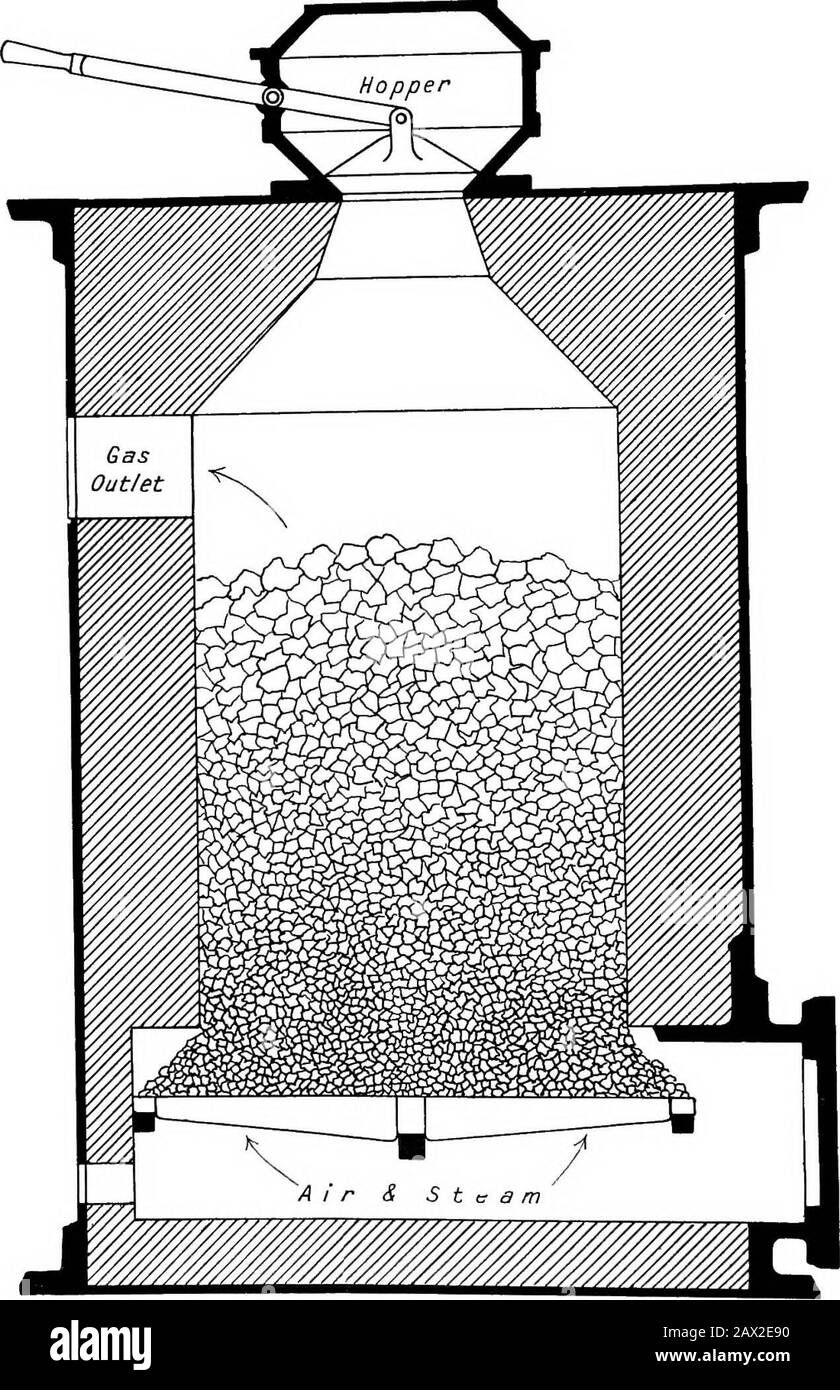Suction gas plants . ngines of from 15 to 20 H.P. The area of the cross-section ofthe furnace averages about 0065 to 0075 sq. ft. per brake H.P.The capacity of the funiaco, reckoned as the cubic contents ofthe space between the tire-bars and the bottom of the distributingand distilling cone, is 237 cubic ft. in the case of the 20-H.P.producer of the National Company. In the Crossley design thecapacity is 158 cubic ft. for 15 brake H.P. These figures reduceto OllS cubic ft. and 0105 cubic ft. per brake H.P., respectively.The diameter of the furnace in the National design is 15^ in.for a 20-H.P.

Image details
Contributor:
The Reading Room / Alamy Stock PhotoImage ID:
2AX2E90File size:
7.1 MB (566.6 KB Compressed download)Releases:
Model - no | Property - noDo I need a release?Dimensions:
1271 x 1966 px | 21.5 x 33.3 cm | 8.5 x 13.1 inches | 150dpiMore information:
This image is a public domain image, which means either that copyright has expired in the image or the copyright holder has waived their copyright. Alamy charges you a fee for access to the high resolution copy of the image.
This image could have imperfections as it’s either historical or reportage.
Suction gas plants . ngines of from 15 to 20 H.P. The area of the cross-section ofthe furnace averages about 0065 to 0075 sq. ft. per brake H.P.The capacity of the funiaco, reckoned as the cubic contents ofthe space between the tire-bars and the bottom of the distributingand distilling cone, is 237 cubic ft. in the case of the 20-H.P.producer of the National Company. In the Crossley design thecapacity is 158 cubic ft. for 15 brake H.P. These figures reduceto OllS cubic ft. and 0105 cubic ft. per brake H.P., respectively.The diameter of the furnace in the National design is 15^ in.for a 20-H.P. furnace, and in the Crossley design 12 in. for a 15-H.P. furnace, giving actual^areas of 131 sq. ft. and 0785 sq. ft.respectively. These figures correspond to furnace areas of 0065and 0-075 sq. ft. per B.H.P. The depth of the fire in the case ofthe National engine is 1 ft. 10 in., and in the case of theCrossley producer it is 2 ft. Experience and experiments have alike shown that, as a general 20 SUCTION GAS PLANTS.. BiG. 10.—Elementary Form of Producer. DETAILS OF CONSTRUCTION, 21 rule, llie higher the velocity with which the air passes throughthe heated carbon, the greater is the proportion of carbon dioxideproduced. That is why the area of the furnace for a given H.P.producer is considerably larger now than was at first the case. Aproducer is unlike a boiler, inasmuch that, under working con-ditions, it is almost impossible to clear out the clinkering ashwithout drawing the fire and emptying the whole producer.Some of this clinkering ash can, it is true, be removed when theproducer is at work if there are arrangements made for cleaningdoors and poking holes. This, however, requires considerableskill on the part of the attendant, and the usual cautiousness ofthe engineer leads him to prefer a rather larger furnace thanhave any trouble with his clinker. The fuel used, of course, aifects the question. There is more clinkering ash in Scotchanthracite than in Welsh anthracite.